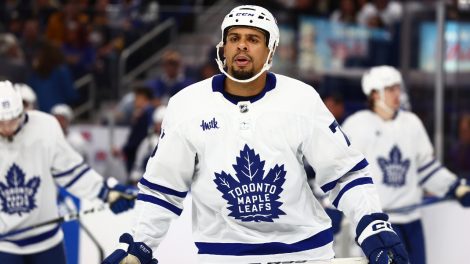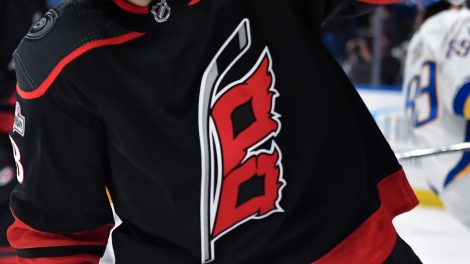Let us not lose sight of what brought us here.
It was the spread of a deadly virus that forced the NHL to turn to Toronto and Edmonton in an effort to salvage its season.
So while there’s some symmetry, and perhaps a cute headline, to be found in two Canadian hockey cities being identified as likely Stanley Cup Playoff hubs on Canada Day, there’s nothing cute about the circumstances.
There will be no fans at any games played on Canadian soil because of the coronavirus pandemic. Aside from local travel and tourism industries, the real winners from rumblings Wednesday that the NHL and NHL Players’ Association were making progress on a return-to-play package were those that see intrinsic value in being able to watch a Stanley Cup tournament during this challenging period in our history.
Now, let’s take a pause for a necessary disclaimer — no deal is done until it’s completely done. And negotiations were still ongoing as of late Wednesday morning. That can’t be stressed enough.
But… things seem to be heading in a positive direction.
The NHL had hoped to restart its season with a hub on each side of the border until the vicious spread of COVID-19 across wide swaths of the United States made that plan untenable. Health and safety had been the stated priority since the league went on pause March 12 and the safest way to see things through led them here, after first failing to come to an agreement on contract tracing protocols with health officials in British Columbia to make Vancouver a hub and then seeing its plan to go to Las Vegas disintegrate when concern emerged in that city about the rising infection rate.
Knock wood, the spread has so far been limited in Edmonton and, to a lesser degree, Toronto.
The NHL’s restart plan would see tightly controlled bubbles created in both cities. Teams would be restricted to bringing 50 personnel apiece onto campuses at the Ice District in Edmonton and Toronto’s CNE grounds, including rosters featuring 28 skaters and as many goalies as each chooses, and every member of the travelling party would be subjected to rigorous testing and limited movement.
That’s what is required to stage a 24-team tournament that features best-of-five qualifiers before commencing with the typical four best-of-seven playoff rounds needed to crown a champion.
If all goes to plan, the Stanley Cup could be awarded by early October.
The complex series of deals needed to restart the season have been months in the making and saw the NHL and NHLPA negotiate through the night into Wednesday morning. They were still hammering away on an extension to the collective bargaining agreement — which, if completed, would be a monumental achievement given the conditions at hand and the rocky last three decades for labour relations in the sport.
Consider this a possible silver lining to an unfortunate situation: The NHL and NHLPA recognized immediately that they were not in an adversarial position with each other when the pandemic hit, and instead sought shared solutions to a shared problem.
The framework of a new CBA would be built around spreading the economic pain until more prosperous days return — with the players’ pay delinked from overall revenues for the next two years through 20 per cent caps on escrow and a fixed salary cap at $81.5 million, before eventually returning to a system that more closely resembles the current one with owners being made whole.
Players would also defer 10 per cent of next season’s salary to a later date and were in negotiations on changes to rules around contract structure — with the league asking for limits on how much money can be paid out in signing bonuses and further restrictions on how much salary variance can be built into a deal from year to year.
In exchange, the NHL is willing to send its players back to the Olympics in both 2022 and 2026 — pending an agreement with the International Olympic Committee on insurance, travel and other issues.
There is also language in the NHL’s return-to-play agreements that would allow players to opt out of this summer’s restart. As we’ve seen with the NBA and Major League Baseball, some may choose to do so for family or health reasons.
By and large, though, players seem to believe the league can create safe conditions in the bubble environment. The NHL plan would see Eastern Conference teams head to Toronto while the Western Conference plays out of Edmonton, keeping both the Maple Leafs and Oilers in their home cities, albeit with players required to relocate to a hotel inside the bubble when the competition phase begins in early August.
The unique atmosphere inside empty arenas would hardly seem to constitute any sort of home-ice advantage, though.
“Once everyone’s there I think people will be familiar with the hotel, the rink, all of that stuff,” Leafs goaltender Frederik Andersen said Tuesday. “There won’t be fans obviously, so I think all of the stuff will be pretty even. An even playing field for everyone. For the flight [travelling] there, I think that’s the only difference.
“Once everyone’s in the hub city I think everyone will be at the same level.”
There is still plenty of work to be done before we get there.
Not only do players have to ratify the return-to-play plan and CBA extension through a vote once everything is completed, but teams have to get through training camps in their own markets safely before travelling to hub cities.
Eighteen of the returning clubs are based in the U.S., including some in COVID-19 hot spots. The Tampa Bay Lightning already had to close their training facilities for five days last month when three players and two staff members produced positive tests.
Great lengths will be taken to try and prevent a larger outbreak among the NHL population once teams gather again in full. That’s an essential element to concluding this pandemic-interrupted season.
Should all of that be navigated successfully, it appears everyone will be heading north to compete for the Cup.
[relatedlinks]









